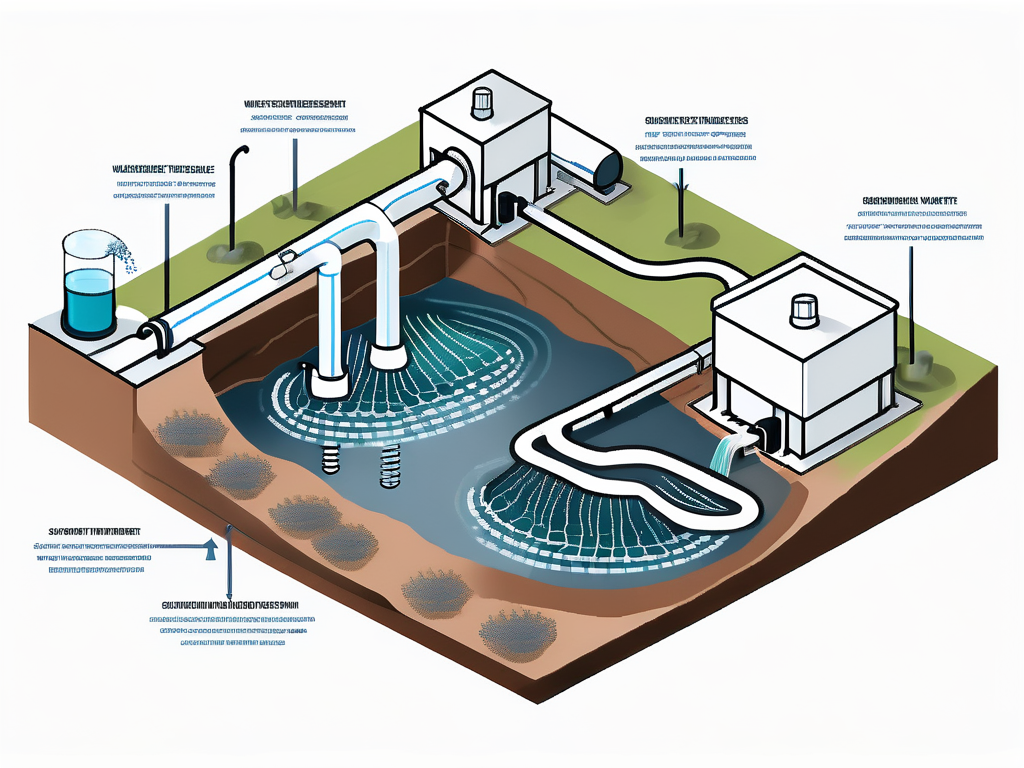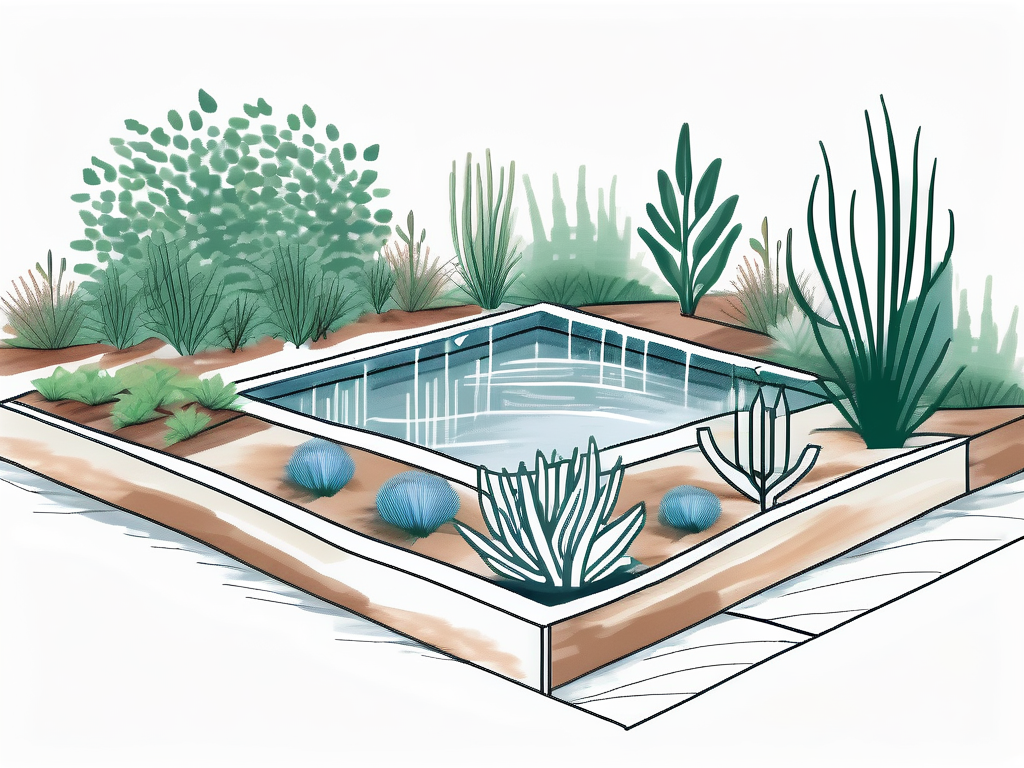
Xeriscaping: Wastewater Treatment Explained
Xeriscaping is a unique approach to landscaping that utilizes water-efficient plants and design techniques to reduce the need for supplemental watering. It is particularly relevant in areas prone to drought or water scarcity. This method can also be integrated with wastewater treatment, where treated wastewater, also known as reclaimed water, is used for irrigation purposes. This glossary article aims to provide a comprehensive understanding of the concept of xeriscaping and its role in wastewater treatment.
As we delve into this topic, we will explore the principles of xeriscaping, the process of wastewater treatment, the application of treated wastewater in xeriscaping, and the benefits and challenges associated with this practice. This article will also shed light on the environmental implications of xeriscaping and its potential contribution to sustainable water management.
Understanding Xeriscaping
Xeriscaping, derived from the Greek word 'xeros' meaning dry, is a landscaping practice that promotes water conservation. It involves the use of drought-resistant plants and efficient irrigation systems to minimize water use. Xeriscaping is not about creating barren, desert-like landscapes, but about making conscious choices in plant selection, soil management, and irrigation techniques to create beautiful, sustainable gardens that require less water.
While xeriscaping can be applied in any climate, it is particularly beneficial in arid and semi-arid regions where water resources are scarce. It is a practical solution to maintaining green spaces in such areas without straining the available water resources. The principles of xeriscaping can be applied at various scales, from residential gardens to public parks and commercial landscapes.
Principles of Xeriscaping
The principles of xeriscaping revolve around water conservation and the creation of sustainable landscapes. These principles include planning and design, soil improvement, appropriate plant selection, practical turf areas, efficient irrigation, use of mulches, and appropriate maintenance. Each of these principles plays a crucial role in reducing water use and promoting the health and beauty of the landscape.
Planning and design involve understanding the site conditions, such as sun exposure, wind direction, and soil type, and designing the landscape accordingly. Soil improvement involves amending the soil with organic matter to improve its water-holding capacity. Appropriate plant selection involves choosing plants that are adapted to the local climate and soil conditions. Practical turf areas involve limiting the use of water-intensive grass lawns. Efficient irrigation involves using techniques such as drip irrigation and scheduling watering times to reduce water loss. Use of mulches involves covering the soil with organic or inorganic materials to reduce evaporation. Appropriate maintenance involves regular weeding, pruning, and fertilizing to maintain the health of the plants.
Wastewater Treatment
Wastewater treatment is a process that removes contaminants from wastewater to produce an effluent that can be safely returned to the water cycle or reused for various purposes. The process involves physical, chemical, and biological methods to remove pollutants such as solids, organic matter, nutrients, and pathogens. The treated wastewater, also known as reclaimed water, can be used for irrigation, industrial cooling, toilet flushing, and even drinking, depending on the level of treatment.

Wastewater treatment is a crucial component of water management, especially in regions where water resources are scarce. By treating and reusing wastewater, we can reduce our dependence on freshwater resources and contribute to sustainable water management. The integration of wastewater treatment with xeriscaping is a practical solution to water conservation in landscaping.
Process of Wastewater Treatment
The process of wastewater treatment involves several stages, each designed to remove a specific type of pollutant. The primary treatment involves the removal of large solids and grit through screening and sedimentation. The secondary treatment involves the use of biological processes to remove organic matter and nutrients. The tertiary treatment involves further treatment to remove remaining pollutants and disinfect the water.
The treated wastewater is then either discharged into a water body or reused for various purposes. The reuse of treated wastewater is subject to regulations and standards to ensure its safety and suitability for the intended use. In the context of xeriscaping, the treated wastewater can be used for irrigation, reducing the need for freshwater resources.
Application of Treated Wastewater in Xeriscaping
The use of treated wastewater in xeriscaping is a practical solution to water conservation in landscaping. The treated wastewater can be used to irrigate the plants, reducing the need for freshwater resources. This practice not only conserves water but also recycles nutrients, benefiting the plants and the soil.
However, the use of treated wastewater in xeriscaping requires careful planning and management. The quality of the treated wastewater, the irrigation methods, and the plant species must be considered to ensure the safety and success of this practice. For instance, the treated wastewater must meet the quality standards for irrigation, the irrigation system must be designed to prevent runoff and evaporation, and the plants must be tolerant of the nutrients and salts in the treated wastewater.
Benefits of Using Treated Wastewater in Xeriscaping
There are several benefits of using treated wastewater in xeriscaping. First, it conserves water by reducing the need for freshwater resources. This is particularly beneficial in regions where water resources are scarce. Second, it recycles nutrients, benefiting the plants and the soil. Third, it reduces the discharge of treated wastewater into water bodies, reducing the potential for pollution. Fourth, it can save money by reducing water bills and the need for fertilizers.
Furthermore, the use of treated wastewater in xeriscaping can contribute to sustainable water management. By treating and reusing wastewater, we can reduce our dependence on freshwater resources and promote the recycling of water and nutrients. This practice can also raise awareness about water conservation and encourage the adoption of sustainable practices in landscaping.
Challenges and Solutions
Despite the benefits, there are challenges associated with the use of treated wastewater in xeriscaping. These challenges include the variability in the quality of the treated wastewater, the potential for soil and groundwater contamination, the public perception of using treated wastewater, and the regulatory requirements for the use of treated wastewater.
However, these challenges can be addressed through careful planning and management. The quality of the treated wastewater can be monitored and controlled to meet the standards for irrigation. The irrigation methods can be designed to prevent runoff and leaching. The public perception can be improved through education and awareness programs. And the regulatory requirements can be met through compliance and documentation.
Environmental Implications
The environmental implications of xeriscaping and the use of treated wastewater are largely positive. Xeriscaping reduces water use and promotes biodiversity by encouraging the use of native and drought-tolerant plants. The use of treated wastewater recycles water and nutrients, reducing the demand for freshwater resources and the potential for pollution.
However, there can be potential environmental risks associated with the use of treated wastewater, such as the accumulation of salts and nutrients in the soil and the potential for groundwater contamination. These risks can be managed through careful planning and monitoring, ensuring that the benefits of this practice outweigh the risks.
Conclusion
Xeriscaping and the use of treated wastewater in landscaping offer a practical solution to water conservation and sustainable water management. By understanding the principles of xeriscaping and the process of wastewater treatment, we can make informed decisions and implement sustainable practices in our landscapes. While there are challenges associated with this practice, they can be addressed through careful planning and management, ensuring that the benefits outweigh the risks.

As we face increasing water scarcity and environmental challenges, practices like xeriscaping and the reuse of treated wastewater become more important. They not only conserve water and recycle nutrients but also contribute to biodiversity and sustainable development. By adopting these practices, we can create beautiful, sustainable landscapes that are in harmony with our environment.



